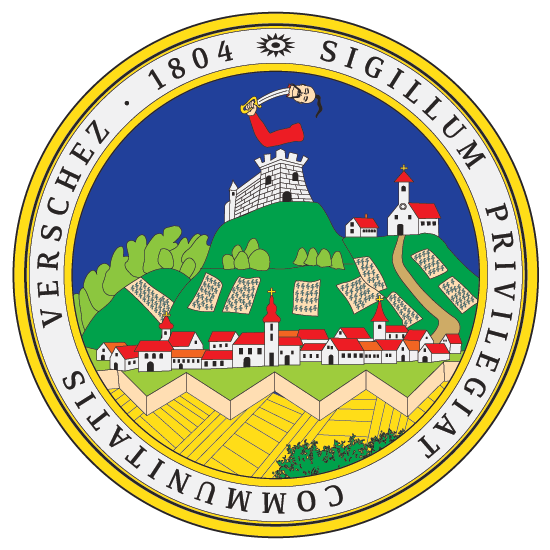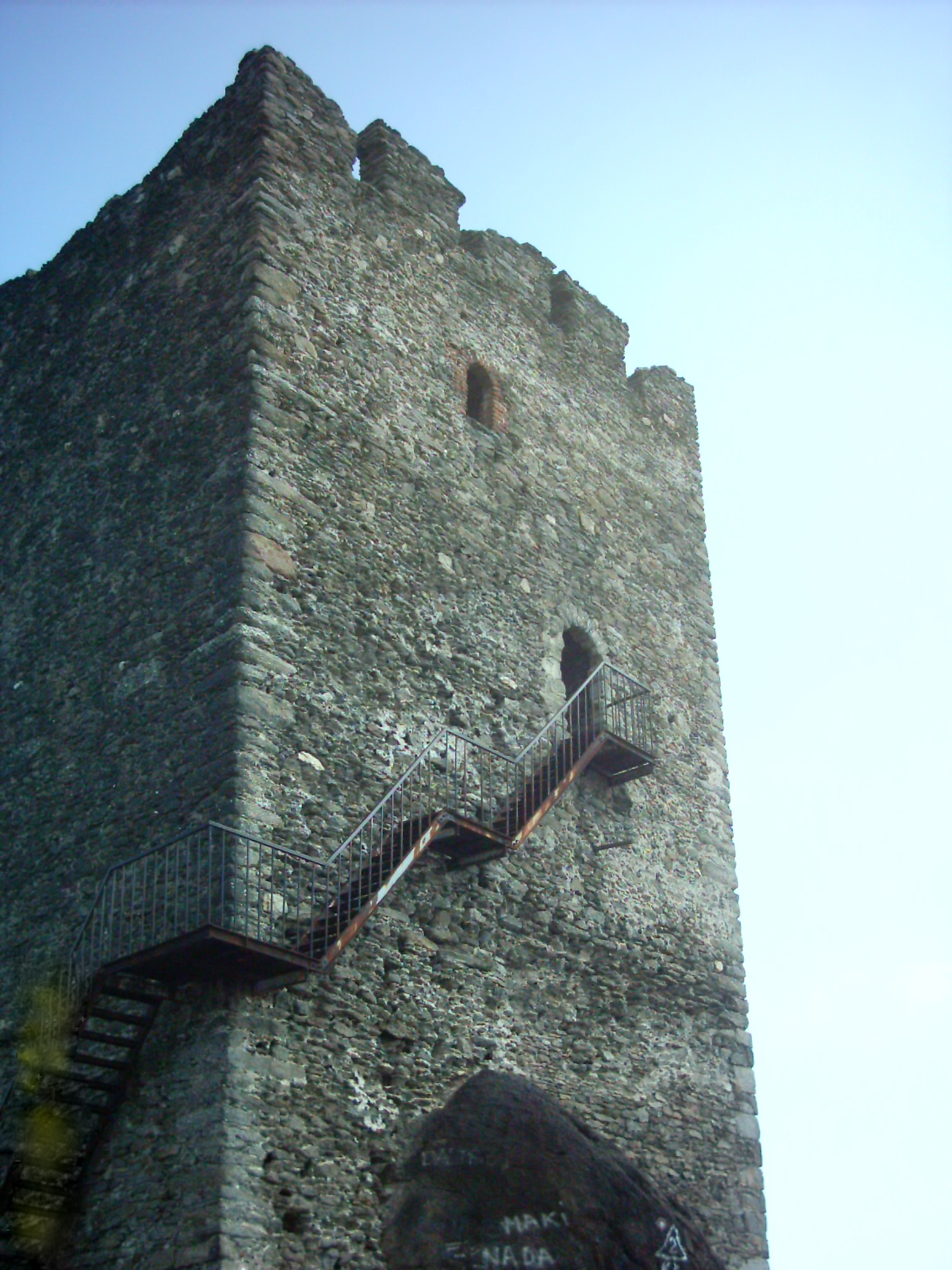|
Vatin Circles
Vatin circles are an archaeological site near the village of Vatin near Vršac. It consists of four regular concentric circles that, going from larger to smaller, form a slight elevation. Size and purpose Vatin circles have a diameter of around 150 meters while the Vlajkovac circles around 300 meters. It is not known for sure how they were created or what their purpose was. It is assumed that they served as observatories for monitoring the movements of the sun and planets. On the winter solstice, December 21, was recorded from Vatin that the sun rises at the very foot of the mountains, on the extreme left, and that it symbolically climbs along the edge of the hill all the way to Gudurički vrh, the highest in Vojvodina. Seen from the Vlajkovac circles, which are located on the other side of the mountain, at an angle of 90 degrees, the sun also rises at the foot of the highest peak, which, viewed from that perspective, is the hill on which the Vršac Castle is located. This indicat ... [...More Info...] [...Related Items...] OR: [Wikipedia] [Google] [Baidu] |
Vatin
Vatin (; ) is a village located in the municipality of Vršac, Serbia. A border crossing between Serbia and Romania is located in the village. The village has a Serb ethnic majority (53.2%) with a sizable Hungarian minority (26.8%) and its population numbering 128 inhabitants (2022 census). Name In Serbian, the village is known as ''Vatin'' (Ватин), in Hungarian as ''Versecvát'', and in German as ''Wattin''. History Bronze Age graves of south Russian steppe nomads were found in the village, as well as 14th century BC duck-shaped vases were found in Vatin. Vatin circles Just outside the village there are Vatin circles that were estimated to belong to the Vinča culture. Historical population *1961: 553 *1971: 489 *1981: 417 *1991: 316 *2002: 250 *2011: 239 *2022: 128 See also *List of places in Serbia *List of cities, towns and villages in Vojvodina This is a list of cities, towns and villages in Vojvodina, a province of Serbia , image_flag ... [...More Info...] [...Related Items...] OR: [Wikipedia] [Google] [Baidu] |
Vršac
Vršac ( sr-Cyrl, Вршац, ) is a city in the autonomous province of Vojvodina, Serbia. As of 2022, the city urban area had a population of 31,946, while the city administrative area had 45,462 inhabitants. It is located in the geographical region of Banat. Etymology The name ''Vršac'' is of Serbian origin, ultimately deriving from Proto-Slavic *vьrxъ, meaning "summit". In Serbian, the city is known as Вршац or ''Vršac'', in Romanian as ''Vârșeț'' or Vîrșeț, in Hungarian as ''Versec'' or ''Versecz'', in German as ''Werschetz'', and in Turkish as ''Virşac'' or ''Verşe''. History The uniqueness of Vršac is reflected in the fact that it has been inhabited since the dawn of the first cultures. Thus, the oldest traces of human presence in Banat originate precisely from Vršac, since individual finds of Paleolithic flint tools from the middle and younger Paleolithic, Mousterian and Aurignacian cultures were found on the slopes of the Vršac Mountains. Th ... [...More Info...] [...Related Items...] OR: [Wikipedia] [Google] [Baidu] |
Serbia
, image_flag = Flag of Serbia.svg , national_motto = , image_coat = Coat of arms of Serbia.svg , national_anthem = () , image_map = , map_caption = Location of Serbia (green) and the claimed but uncontrolled territory of Kosovo (light green) in Europe (dark grey) , image_map2 = , capital = Belgrade , coordinates = , largest_city = capital , official_languages = Serbian language, Serbian , ethnic_groups = , ethnic_groups_year = 2022 , religion = , religion_year = 2022 , demonym = Serbs, Serbian , government_type = Unitary parliamentary republic , leader_title1 = President of Serbia, President , leader_name1 = Aleksandar Vučić , leader_title2 = Prime Minister of Serbia, Prime Minister , leader_name2 = Đuro Macut , leader_title3 = Pres ... [...More Info...] [...Related Items...] OR: [Wikipedia] [Google] [Baidu] |
Vlajkovac
Vlajkovac (; ; ) is a village in Serbia. It is situated in the Vršac municipality, in the South Banat District, Vojvodina province. Name In Serbian language, Serbian, the village is known as ''Vlajkovac'' (Влајковац), in Romanian language, Romanian as ''Vlaicovăț'', in Hungarian language, Hungarian as ''Temesvajkóc'', and in German language, German as ''Wlajkowatz''. History Bronze Age graves of south Russian steppe nomads were found in the village. Just outside the village there are Vlajkovac circles that have a diameter of around 300 meters and are considered to belong to the Vinča neolithic culture. Vlajkovac circles have been plowed over several times and now only their outlines are visible. They are visible from satellites. Ethnic groups (2002 census) The village has a Serbs, Serb ethnic majority with a seizable Romanians, Romanian and Hungarian people, Hungarian minority and its population numbering 1,178 people (2002 census).Popis stanovništva, domaćinst ... [...More Info...] [...Related Items...] OR: [Wikipedia] [Google] [Baidu] |
Vojvodina
Vojvodina ( ; sr-Cyrl, Војводина, ), officially the Autonomous Province of Vojvodina, is an Autonomous administrative division, autonomous province that occupies the northernmost part of Serbia, located in Central Europe. It lies within the Pannonian Basin, bordered to the south by the national capital Belgrade and the Sava and Danube Rivers. The administrative centre, Novi Sad, is the second-largest city in Serbia. The historic regions of Banat, Bačka, Syrmia and northernmost part of Mačva overlap the province. Modern Vojvodina is multi-ethnic and multi-cultural, with some 26 ethnic groups and six official languages. Fewer than two million people, nearly 27% of Serbia's population, live in the province. Name ''Vojvodina'' is also the Serbian word for voivodeship, a type of duchy overseen by a voivode. The Voivodeship of Serbia and Banat of Temeschwar, Serbian Voivodeship, a precursor to modern Vojvodina, was an Austrian province from 1849 to 1860. Its official name ... [...More Info...] [...Related Items...] OR: [Wikipedia] [Google] [Baidu] |
Vršac Castle
Vršac Castle (, ) formerly known as Vršac Tower (, ), is a medieval fortress near Vršac, Vojvodina, Serbia. Only Donjon tower remained from the entire complex, but in 2009 reconstruction started, to recreate the entire Vršac Castle. Vršac Castle was declared a Monument of Culture of Great Importance in 1991, and is protected by the Republic of Serbia. History There are two theories about the origin of this fortress. According to the Turkish traveler, Evliya Çelebi, the fortress was built by the Serbian despot Đurađ Branković. Historians consider that Branković built the fortress after the fall of Smederevo in 1439. In its construction the fortress had some architectural elements similar to those in the fortress of Smederevo and the fortress around the Manasija monastery. The other theory claims that Vršac Castle is a remnant of the medieval fortress known as ''Erdesumulu'' (Hungarian: ''Érdsomlyó'' or ''Érsomlyó'', Serbian: ''Erd-Šomljo'' / Ерд-Шомљо ... [...More Info...] [...Related Items...] OR: [Wikipedia] [Google] [Baidu] |
Vinča Culture
The Vinča culture , also known as Turdaș culture, Turdaș–Vinča culture or Vinča-Turdaș culture, is a Neolithic archaeological culture of Southeast Europe, dated to the period 5400–4500 BC. It is named for its type site, Vinča-Belo Brdo, a large tell settlement discovered by Serbian archaeologist Miloje Vasić in 1908. As with other cultures, it is mainly distinguished by its settlement pattern and ritual behaviour. It was particularly noted for its distinctive dark-burnished pottery. Farming technology first introduced to the region during the First Temperate Neolithic was developed further by the Vinča culture. This fuelled a population boom that produced some of the largest settlements in prehistoric Europe. These settlements maintained a high degree of cultural uniformity through the long-distance exchange of ritual items, but were probably not politically unified. Various styles of zoomorphic and anthropomorphic figurines were hallmarks of the culture, as ... [...More Info...] [...Related Items...] OR: [Wikipedia] [Google] [Baidu] |
Ancient Rome
In modern historiography, ancient Rome is the Roman people, Roman civilisation from the founding of Rome, founding of the Italian city of Rome in the 8th century BC to the Fall of the Western Roman Empire, collapse of the Western Roman Empire in the 5th century AD. It encompasses the Roman Kingdom (753–509 BC), the Roman Republic (50927 BC), and the Roman Empire (27 BC476 AD) until the fall of the western empire. Ancient Rome began as an Italic peoples, Italic settlement, traditionally dated to 753 BC, beside the River Tiber in the Italian peninsula. The settlement grew into the city and polity of Rome, and came to control its neighbours through a combination of treaties and military strength. It eventually controlled the Italian Peninsula, assimilating the Greece, Greek culture of southern Italy (Magna Graecia) and the Etruscans, Etruscan culture, and then became the dominant power in the Mediterranean region and parts of Europe. At its hei ... [...More Info...] [...Related Items...] OR: [Wikipedia] [Google] [Baidu] |




